Three ocean summer sport salmon fishing options set today reflect much improved catch quotas over 2020 with final approval happening by mid-April Leave a reply
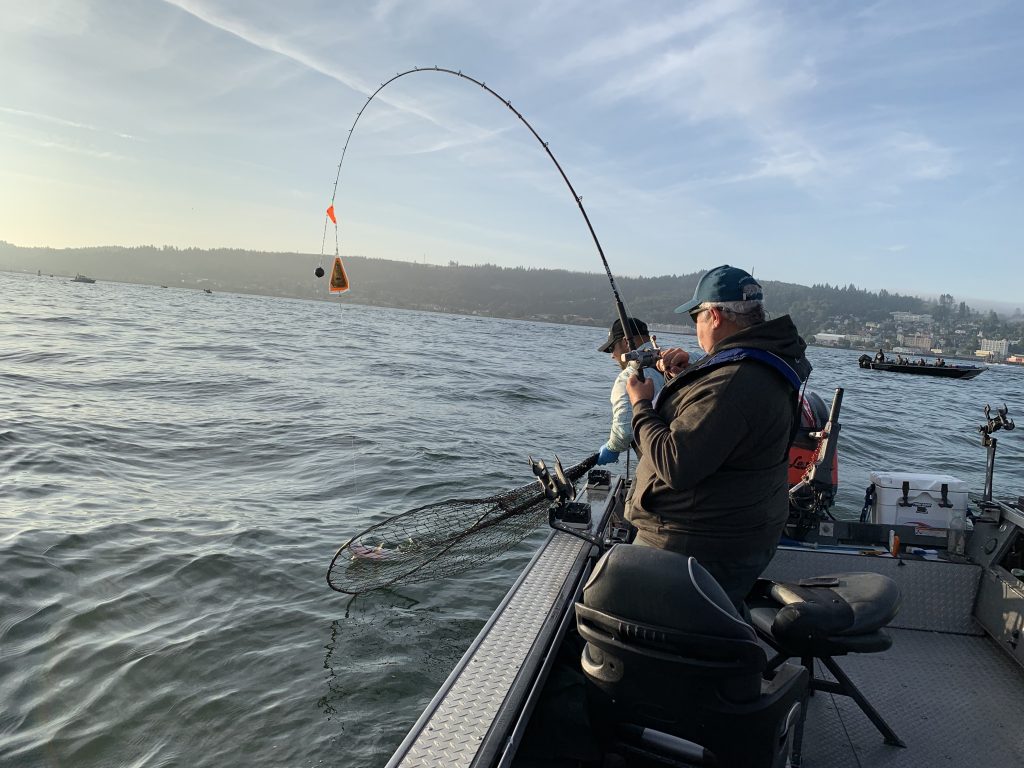
By Mark Yuasa
State, tribal and federal fishery managers developed three ocean sport salmon alternatives during the Pacific Fishery Management Council (PFMC) meetings that ended today (Thursday, March 11), and will likely lead to decent summer fishing although getting to the finish line could involve some “give and take” due to some poor coastal coho returns.
“The chinook options are similar to last year, and if those Columbia River forecasts are accurate, we should have a pretty successful season out in the ocean this summer,” said Wendy Beeghley, the head Washington Department of Fish and Wildlife (WDFW) coastal salmon manager.
“The Columbia River itself could be red hot as this is a great forecast, and one of the highest we’ve seen in many years,” Beeghley said. “What I’m worried about is that even with the higher quotas we have in the alternatives, the fishing seasons in the ocean itself might not last that long.”
The two highest ocean alternatives would have a chinook only season starting either on June 14 or June 19 followed by chinook and hatchery coho fisheries opening in late June or early July depending on the area through September 30 or until a catch quota/guideline are achieved.
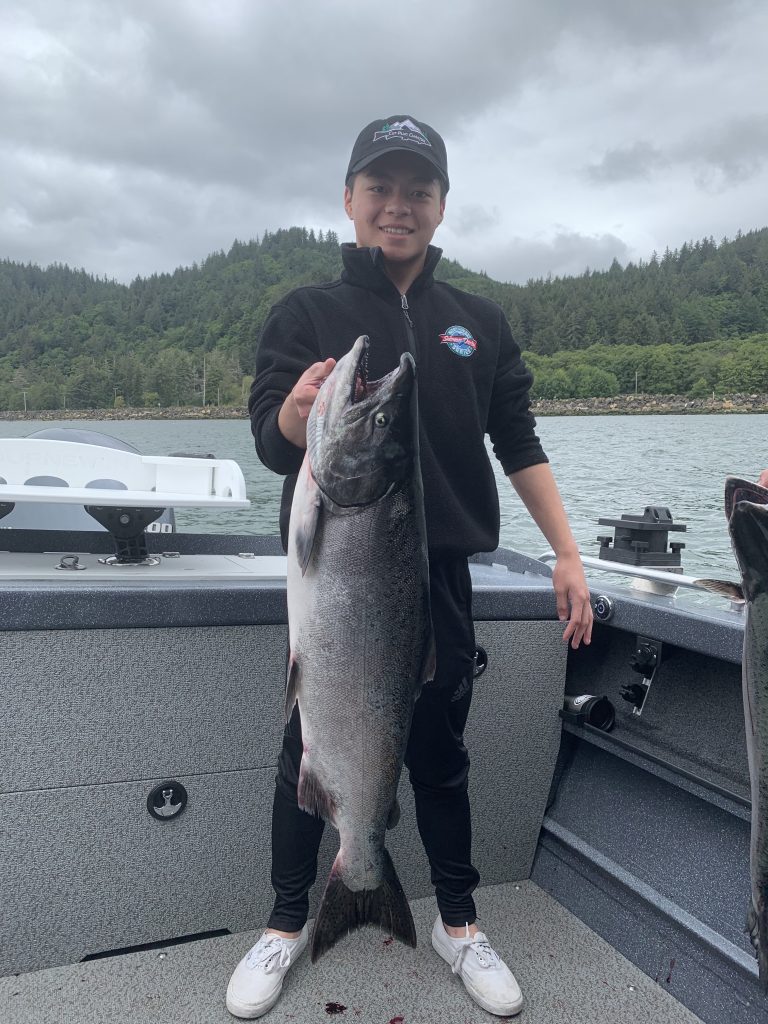
In the first alternative, the sport catch for Neah Bay, La Push, Westport and Ilwaco is 28,000 chinook guideline and 75,200 hatchery-marked coho quota (30,000 and 29,400 in 2020); second alternative is 25,000 and 95,600 (22,125 and 22,500 in 2020); and third alternative is all coastal fisheries closed (same as 2020).
Beeghley pointed out under all alternatives, the Queets River isn’t expected to meet the spawning escapement goal of 5,800 for wild coho (3,919 is the forecast compared to 7,835 in 2020). Under all options the expected Queets coho spawning figure would range between 3,400 and 3,500.
While the Queets is the lowest of all coastal wild coho returns, a majority of others are expected to struggle thus putting a wrench in knowing where fishing alternatives will eventually land.
In spite of the coastal wild coho scuffle, a very robust 1,732,900 coho are expected to arrive off the Washington coast compared to a preseason forecast of 268,700 and an actual return of 479,600 in 2020 will likely pave the way for improved fisheries. The Columbia subtotal forecast is 1,590,000 coho compared to a forecast last year of 181,000 and a much larger actual return of 363,600.
Coho are the bread and butter for coastal and Columbia River fisheries, and this could be the largest dating back to at least 2015 when the forecast was 1,015,000 and in 2014 when the forecast was 1,724,000.
You’d have to go back to 2009 to find anything similar when the forecast was 1.2 million coho — actual return was about 1.05 million — and turned out to be a very productive ocean coho fishery season.
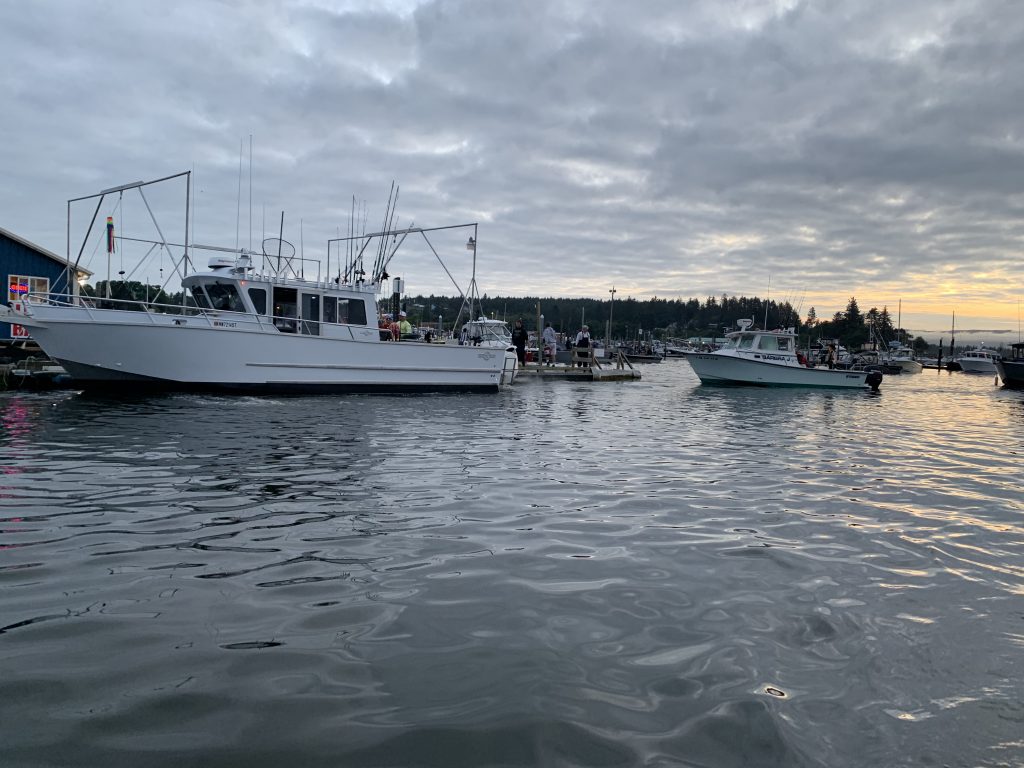
The 2021 Columbia fall chinook and coho runs are a huge improvement over the past few years with 580,800 fall upriver bright, tule and lower river chinook are expected to return off the Big-C mouth in 2021 compared to a forecast of 431,000 and an actual return of 574,700 in 2020.
The upriver bright chinook return forecast of 354,200 in 2021 (233,400 was forecast and 299,300 was actual return in 2020). The lower river “tule” hatchery chinook (a driver for ocean salmon fisheries) is predicted at 73,100 (51,000 and 77,900).
Those king forecasts should boost sport fisheries in summer and fall from Neah Bay south to Ilwaco and in the Columbia River from Buoy 10 near Astoria to the Gorge area, and clear up to the Hanford Reach.
In 2020, the coast opened on June 20 and led to an early closure by July 26 at Ilwaco and Aug. 7 at Neah Bay as quotas – 13,250 coho at Ilwaco and 2,988 at Neah Bay – were gobbled up quickly. The two coastal ports wedged in between (Westport and La Push) remained open until Sept. 30.
“The fish we saw last year looked healthy so that was good news,” Beeghley said. “Run timing for Columbia River chinook and coho returns were normal last year.”
The top priority while crafting fishing seasons off the coast and in Puget Sound for abundant salmon runs is to ensure all user groups protect certain salmon stocks including those under the Endangered Species Act.
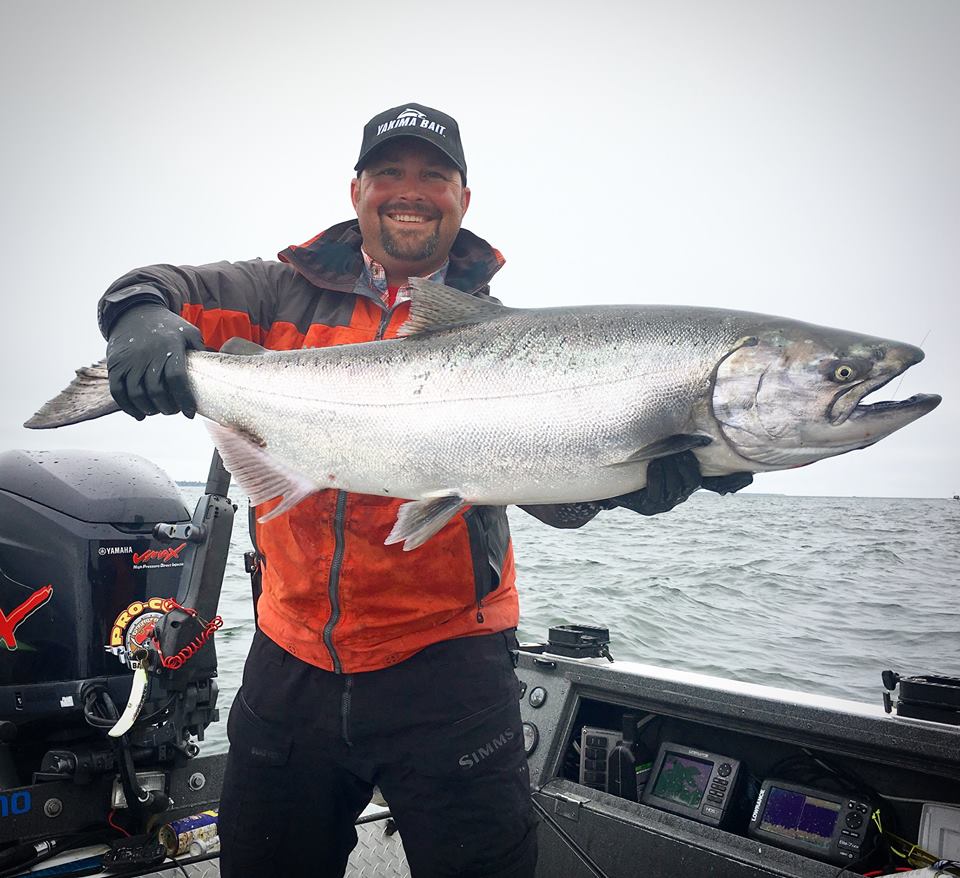
Inner-marine sticklers on crafting fishing seasons will likely be mid-Hood Canal, Skagit and Stillaguamish chinook stocks as well as southern Puget Sound hatchery chinook forecasts that are way down too.
WDFW will host the first North of Falcon meeting on March 16 to discuss initial fishing options for inner-marine waterways from the Strait of Juan de Fuca and Puget Sound.
Here are the three ocean fishing options set today at the PFMC meeting:
ALTERNATIVE ONE
Total Allowable Catch is 60,000 chinook guideline and 80,000 hatchery-marked coho quota (60,000 and 35,000 in 2020; 32,000 and 172,200 in 2019; and 58,600 and 37,800 in 2018). Breakdown of sport catch is 28,000 chinook guideline and 75,200 hatchery-marked coho quota (30,000 and 29,400 in 2020).
(Other notes – No Area 4B add-on fishery. Buoy 10 fishery opens Aug. 1 with an expected kept catch of 70,000 hatchery-marked coho (13,000 in 2020) in August and September. Overall chinook and/or coho TACs may need to be reduced or fisheries adjusted to meet NMFS ESA guidance, FMP requirements, upon conclusion of negotiations in the North of Falcon forum, or upon receipt of preseason catch and abundance expectations for Canadian and Alaskan fisheries.)
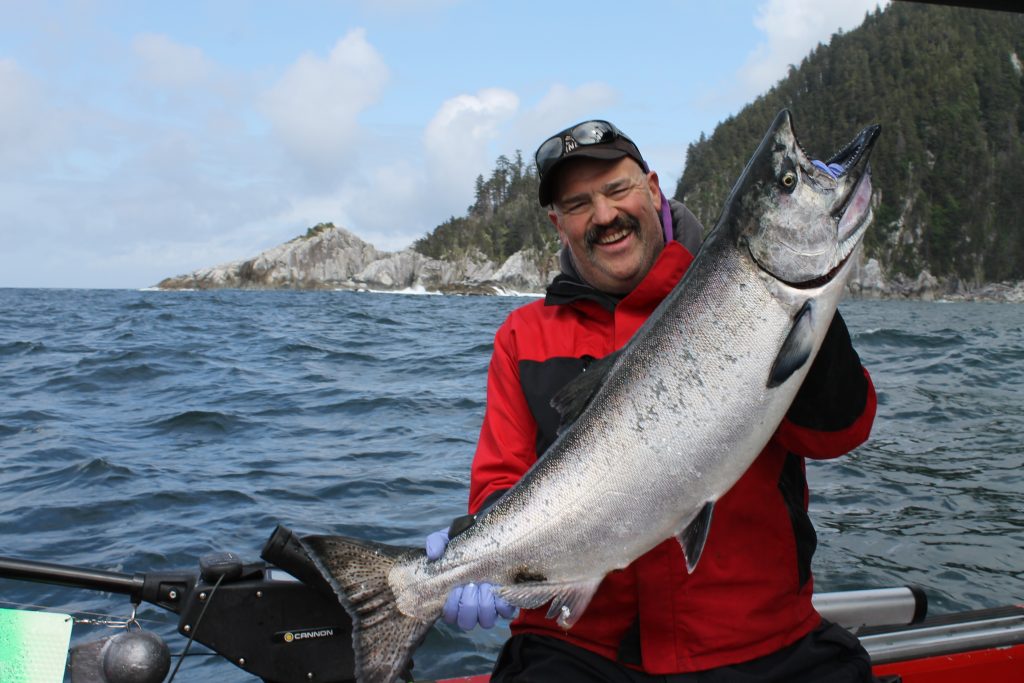
NEAH BAY: 6,000 chinook guideline and 7,820 hatchery-marked coho quota (6,400 and 3,060 in 2020).Open daily from June 19 through Sept. 30 or could close sooner if quota/guideline is achieved. During June 19-July 3, one salmon daily limit, except release all coho. Beginning July 4, all salmon, except no chum beginning Aug. 1 with a two salmon daily limit; all coho retained must be hatchery-marked with missing adipose fin. Beginning Aug. 1, chinook non-retention east of the Bonilla-Tatoosh line.
LA PUSH: 1,960 chinook guideline and 1,300 hatchery-marked coho quota (1,250 and 760 in 2020).Open daily from June 19 through Sept. 30 or could close sooner if quota/guideline is achieved. During June 19-July 3, one salmon daily limit, except release all coho. Beginning July 4, all salmon, except no chum beginning Aug. 1 with a two salmon daily limit; all coho retained must be hatchery-marked with missing adipose fin.
WESTPORT: 13,300 chinook and 27,820 hatchery-marked coho (14,200 and 10,880 in 2020). Open from June 19 through Sept. 30 or could close sooner if quota/guideline is achieved. Open daily during June 19-July 3, two salmon daily limit, except release all coho, and chinook minimum size is 22 inches. Open daily beginning July 4, all salmon with a two salmon daily limit and no more than one may be a chinook, chinook minimum size is 22 inches; all coho retained must be hatchery-marked with missing adipose fin.
ILWACO: 7,400 chinook and 37,600 hatchery-marked coho (8,000 and 14,700 in 2020).Open daily from June 14-27 with a one salmon daily limit, release all coho and a chinook minimum size of 22 inches. Open daily beginning June 29, all salmon with a two salmon daily limit and no more than one may be a chinook, chinook minimum size is 22 inches; all coho retained must be hatchery-marked with missing adipose fin.
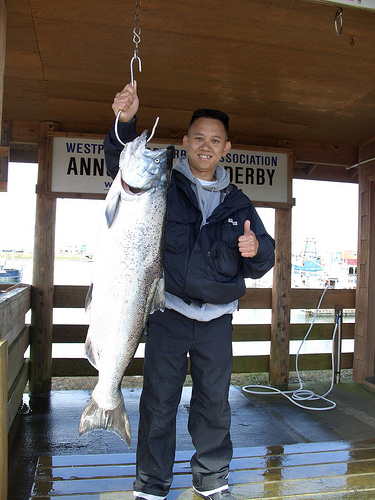
ALTERNATIVE TWO
Total Allowable Catch is 50,000 chinook and 110,000 hatchery-marked coho (45,000 and 25,000 in 2020; 27,500 and 159,600 in 2019; and 30,000 and 14,700 in 2018). Breakdown of sport catch quota is 25,000 chinook and 95,600 hatchery-marked coho (22,125 and 22,500 in 2020).
(Other notes – No Area 4B add-on fishery. Buoy 10 fishery opens Aug. 1 with an expected kept catch of 80,000 hatchery-marked coho (15,000 in 2020) in August and September. Overall chinook and/or coho TACs may need to be reduced or fisheries adjusted to meet NMFS ESA guidance, FMP requirements, upon conclusion of negotiations in the North of Falcon forum, or upon receipt of preseason catch and abundance expectations for Canadian and Alaskan fisheries.)
NEAH BAY: 5,400 chinook and 7,860 hatchery-marked coho (4,700 and 2,340 in 2020).Open daily during June 19-25, one salmon daily limit, except release all coho. Beginning June 26 through September 30, all salmon, except no chum beginning Aug. 1 with a two salmon daily limit; all coho retained must be hatchery-marked with missing adipose fin. Beginning Aug. 1, chinook non-retention east of the Bonilla-Tatoosh line.
LA PUSH: 1,200 chinook and 1,970 hatchery-marked coho (1,100 and 580 in 2020). Open daily during June 19-25, one salmon daily limit, except release all coho. Beginning June 26 through September 30, all salmon, except no chum beginning Aug. 1 with a two salmon daily limit; all coho retained must be hatchery-marked with missing adipose fin.
WESTPORT: 11,800 chinook and 27,970 hatchery-marked coho (10,500 and 8,330 in 2020). Open daily during June 19-26, two salmon daily limit, except release all coho, and chinook minimum size is 22 inches. Open Sundays through Thursdays only from June 27 through September 30 or could close sooner if quota/guideline is achieved. All salmon with a two salmon daily limit and no more than one may be a chinook, chinook minimum size is 22 inches; all coho retained must be hatchery-marked with missing adipose fin.
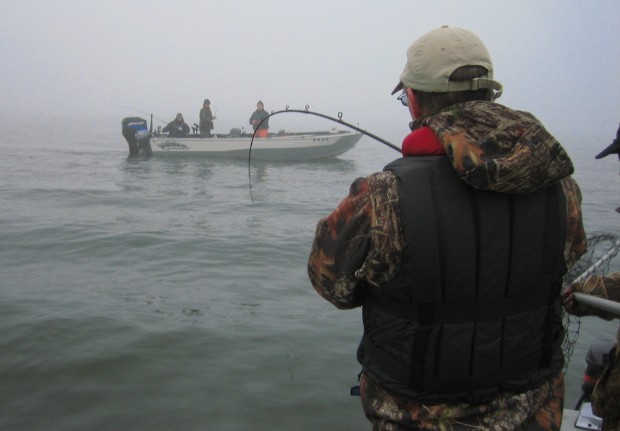
ILWACO: 6,600 chinook and 57,800 hatchery-marked coho (5,800 and 11,250 in 2020). Open daily during June 19-26, two salmon daily limit, except release all coho, and chinook minimum size is 22 inches. Open daily from June 27 through September 30 or could close sooner if quota/guideline is achieved. All salmon with a two salmon daily limit and no more than one may be a chinook, chinook minimum size is 22 inches; all coho retained must be hatchery-marked with missing adipose fin.
ALTERNATIVE THREE
All fisheries off the entire coast will be closed (all fisheries off entire coast closed in 2020; 22,500 and 94,400 in 2019; and all fisheries off the entire coast closed in 2018)
Upcoming meetings
March 16, first North of Falcon (NOF) Zoom public meeting on preliminary Puget Sound and inner-marine area fisheries; March 17 and April 1, Columbia River fisheries discussion via Microsoft Teams meeting; March 23 and March 25, public meetings via Zoom on Puget Sound salmon fisheries; March 31, second NOF public meeting via Televideo; and April 8-15, PFMC meeting via webinar to adopt final salmon fishing seasons. For a list of meeting information, go to https://wdfw.wa.gov/fishing/management/north-falcon/public-meetings.
(Note: Due to the pandemic all meeting dates and times are subject to change and will be held virtually or via Zoom, Televideo, Microsoft Teams and webinar.)

